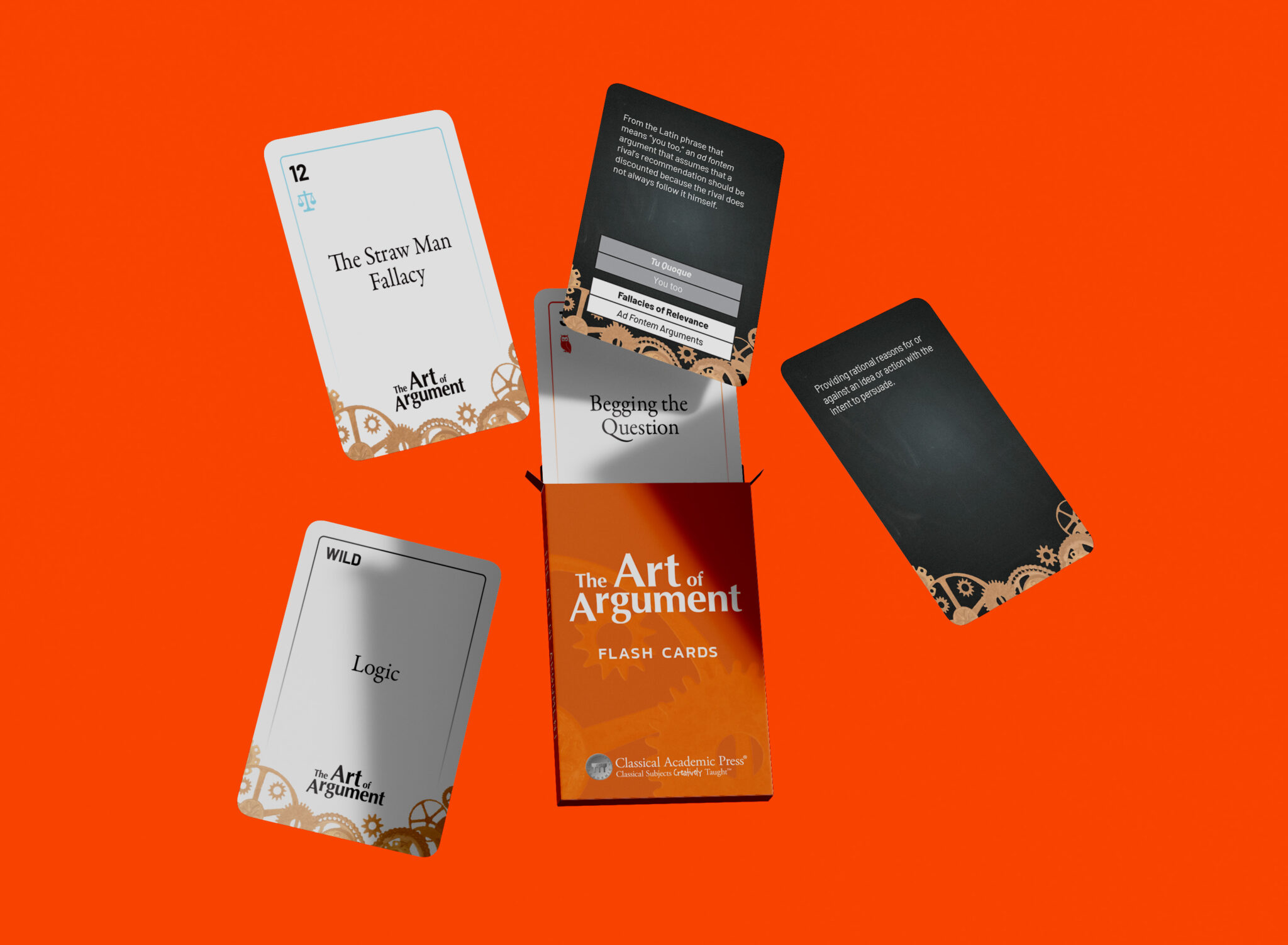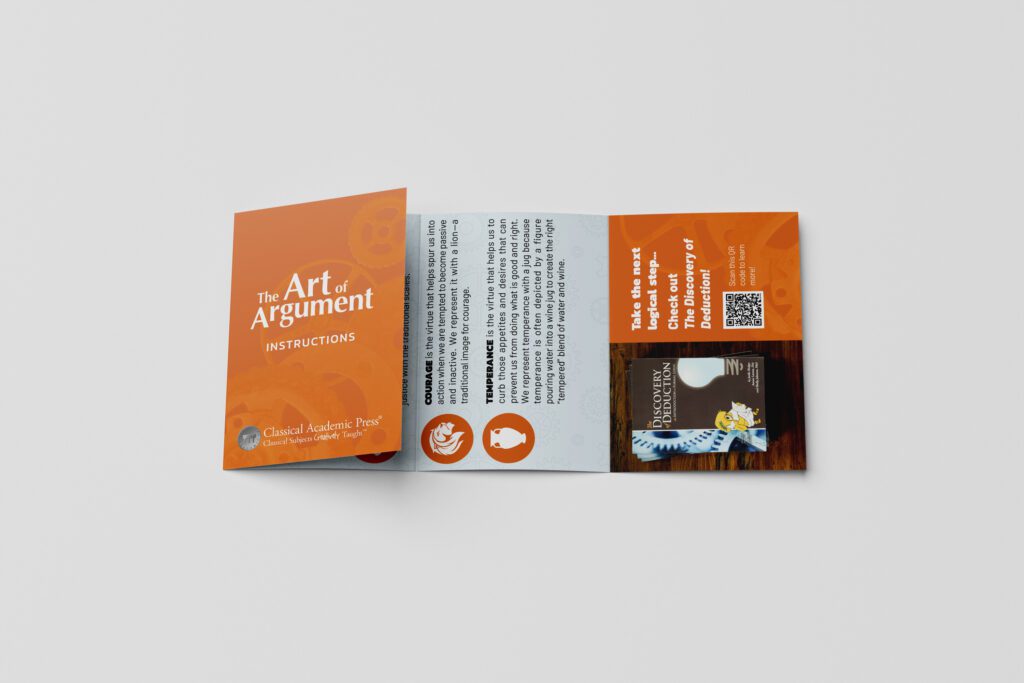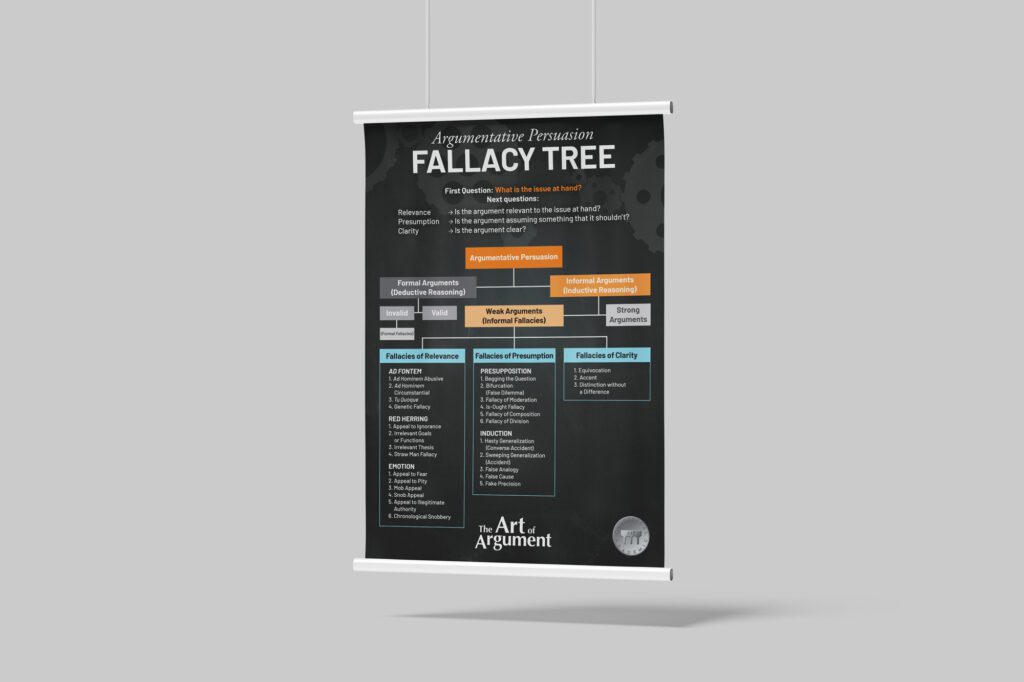
The Project
The Core Idea: Classical Academic Press’s The Art of Argument offers a robust exploration of logical fallacies. Recognizing that engaging with complex concepts can sometimes benefit from a fresh perspective, I designed a set of flashcards intended to serve as a helpful companion to this valuable resource. The aim was to create a tool that would make the learning process more accessible and, dare I say, subtly engaging for students.
The Design Approach: Rather than a straightforward presentation of terms and definitions, each fallacy was thoughtfully assigned a “suit” and a number. This structural choice was driven by the idea of introducing an element of interactivity. The intention was to move beyond passive memorization and offer a framework for students to engage with the material in a more dynamic way.
Fostering Engagement: The suit and number system wasn’t conceived as a trivial addition. Instead, it provides a foundation for students to develop their own interactive methods of review, potentially including peer-based activities. This design encourages a more active approach to learning, where identifying and understanding fallacies can become a shared and subtly stimulating experience. The flashcards aim to complement the textbook by offering an alternative pathway to reinforce comprehension.
Supporting Diverse Learning Styles: While these flashcards can certainly be a valuable tool for individual study, their design also subtly supports collaborative learning environments. The structured format allows students to work together, perhaps devising their own ways to test their understanding and identify fallacies in examples. This can transform the process of mastering logical argumentation into a more communal and quietly engaging endeavor.
The Intended Outcome: The resulting set of flashcards is intended to be a useful and subtly engaging resource for students learning from The Art of Argument. By introducing a structured, interactive element, the goal is to enhance understanding and retention of complex concepts. This design seeks to complement the textbook’s strengths by offering a different mode of interaction with the material, ultimately aiming to support a deeper grasp of logical reasoning.


